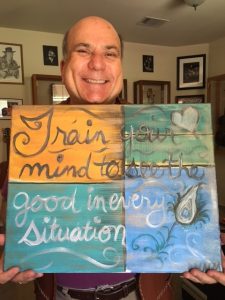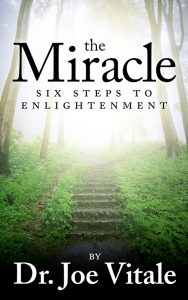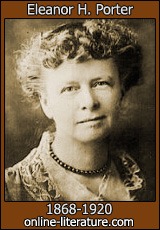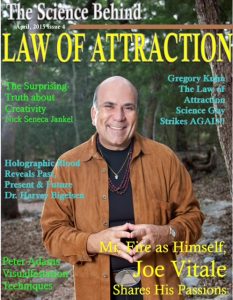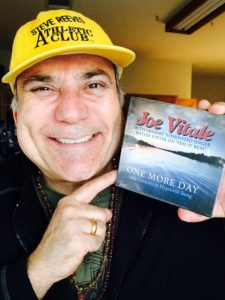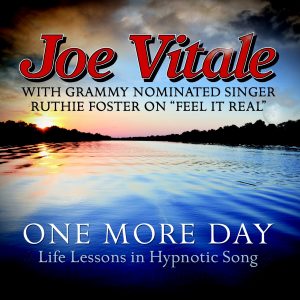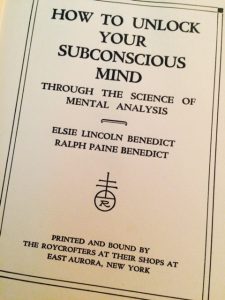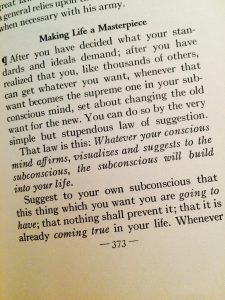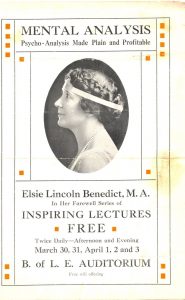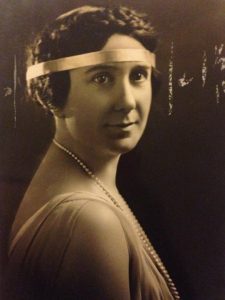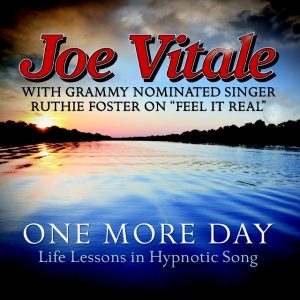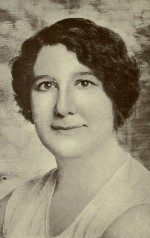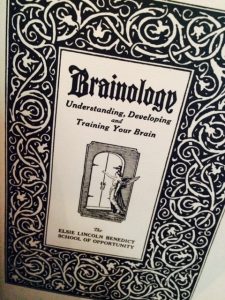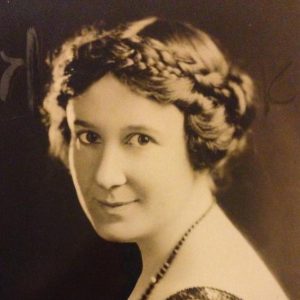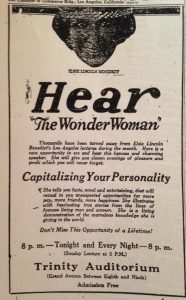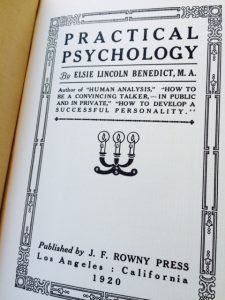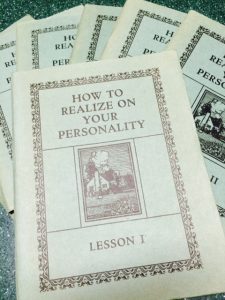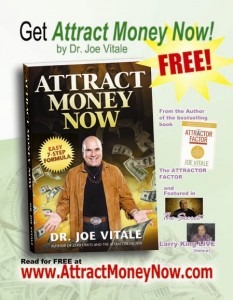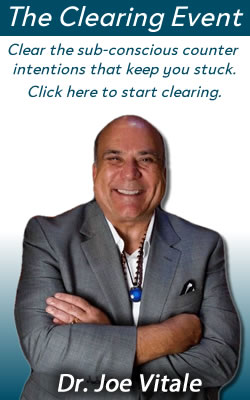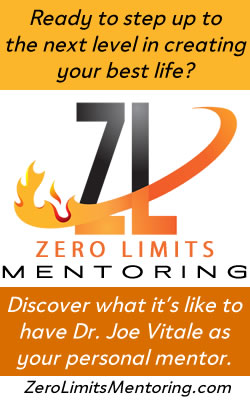Tag: neuroscience
The LOA Glad Game
One of the best Law of Attraction books you could read today was first published in 1913.
Let me tell you about it…
Recently we watched the PBS television remake of the classic children’s book, Pollyanna.
I absolutely loved the new movie.
The acting, scenery, editing and story were virtually perfect.
There have been other movies of Pollyanna, going way back to 1920 with famous silent film star Mary Pickford. And of course Disney did their version in 1960 with Hayley Mills.
But this recent version is fresh and timely.
And I loved being reminded of the message in it.
At the core of Pollyanna’s sunny personality is “the glad game.”
In short, it’s the ability to find something to be glad about in any situation.
“There is something about everything that you can be glad about, if you keep hunting long enough to find it.” ― Eleanor H. Porter, Pollyanna
As Porter’s books reveal, this is at first something you have to train yourself to do. Even Pollyanna wasn’t born knowing it. Her father taught it to her.
It reminds me of the art I bought a few months ago:
In short, you can train your mind to see the good.
It’s what recent neuroscience is telling us.
You are not your brain; you are the operator of it.
You can teach your mind how to look for the “glad” in life.
And once you “get it,” looking for the glad in any situation becomes a fun challenge.
But the payoff is happiness.
And isn’t that what you want?
On my forthcoming new album, I plan to record a song called “Look for the Light.” It’s a reminder that there is light in everything.
But after seeing this remake of Pollyanna, I also wrote a song called “The Glad Game.”
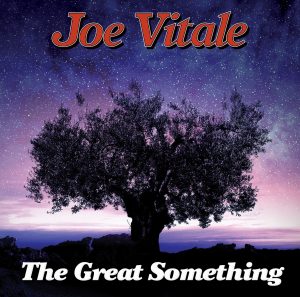
I’m dedicating my forthcoming sixth singer-songwriter album to Melissa Etheridge. It’ll have a “glad” song on it.
I’m using what I learned from my private lesson with rock icon Melissa Etheridge to write something memorable.
And all of this got me wondering where the glad game came from.
Did Eleanor Porter invent it?
“What men and women need is encouragement. Their natural resisting powers should be strengthened, not weakened…. Instead of always harping on a man’s faults, tell him of his virtues. Try to pull him out of his rut of bad habits. Hold up to him his better self, his REAL self that can dare and do and win out! … The influence of a beautiful, helpful, hopeful character is contagious, and may revolutionize a whole town…. People radiate what is in their minds and in their hearts. If a man feels kindly and obliging, his neighbors will feel that way, too, before long. But if he scolds and scowls and criticizes—his neighbors will return scowl for scowl, and add interest! … When you look for the bad, expecting it, you will get it. When you know you will find the good—you will get that…” – Eleanor H. Porter, Pollyanna
In my new book, The Miracle: Six Steps to Enlightenment, I mention a little book called Just Be Glad.
I went looking for it and found it.
It’s by Christian D. Larson, a popular New Thought author of such books as Your Forces and How to Use Them. He also penned the famous Optimist Creed, which I’ve reprinted in a book or two of my own.
Larson’s glad book came out in 1912.
Porter’s glad novel came out in 1913.
I can’t find any references to any “glad game” before 1913, when Pollyanna: The Glad Book was first published.
Certainly after the book became a bestseller, it triggered more books, a board game, a play, movies, and rumors have it there were glad game mastermind meetings.
Pollyanna became a huge bestseller in 1914, became a publishing phenomena, ignited a joyous, glad-hunting following around the world, and is still regarded as a classic of children’s literature today.
Maybe Larson’s little book gave Porter the idea for her novel. I can’t say. It’s not likely, though.
Porter was probably finishing her novel and sending it to the publisher in 1912, when Larson’s book arrived.
So I think Porter deserves full credit for creating the idea of The Glad Game.
But I was also curious why the glad game isn’t talked about much these days.
Considering how much stress is reported in the world, and how much “fake news” is triggering unsettling emotions in people, learning to play the glad game would be welcome relief.
It could even be healing.
It could even help us return to a clarity of mind where we could better see our choices.
In fact, the glad game could be a wonderful way to change your inner vibration to one that is higher, brighter, and even wiser.
As you know, you get what you radiate.
Change the dial inside, using the glad game, and you can attract happier results.
So, why don’t more of us play the game?
My guess is that critical, skeptical, wounded, or cautious people think being a “Pollyanna” is not being a realist.
Over the decades, the term “Pollyanna” has come to be an insult; used to tell someone they are foolish, not in touch with reality, and possibly even dangerous to themselves.
But being a Pollyanna is making a choice on how to see the world.
You can still see the challenges, and still see the good in them, and still act to change them.
Letting situations or other people steal your happiness is being a victim.
Choosing to see the good/glad in situations or other people is being empowered.
You have a choice, of course.
For me, life is an optical illusion.
You see what you unconsciously expect and believe.
Like Pollyanna, you can consciously choose to look for and find the good/the glad/the light.
It’s your choice.
“Be glad. Be good. Be brave.” – Eleanor H. Porter
Remember, if you see the good but just sit there, you aren’t co-creating your reality.
You want to see the good, see the actions you need to take next, and do them.
After all, when Pollyanna was injured by a car, she didn’t give up. (She did briefly, but she pulled out of it.)
Instead, she got treatment and she got better.
Eleanor Porter, the author of Pollyanna: The Glad Book, explained it this way:
“Pollyanna did not pretend that everything was sugar-coated goodness, instead Pollyanna was positively determined to find the good in every situation.”
Note the difference?
Just looking at the world with blind eyes to objective reality is not what the author meant; it was looking at the world and finding the good in it.
Eleanor Porter once told an interviewer –
“People have thought that Pollyanna chirped that she was ‘glad’ at everything … I have never believed that we ought to deny discomfort and pain and evil; I have merely thought that it is far better to ‘greet the unknown with a cheer.'”
I believe the 1913 book was an unrecognized Law of Attraction resource.
Maybe it’s time for all of us to read it again, or at least go see the movie.
I think you’ll find something glad in it. 🙂
Ao Akua,
Joe
PS – Learn about the recent PBS TV version of Pollyanna here:
https://www.amazon.com/Pollyanna-Sarah-Harding/dp/B01N67733P/
Law of Attraction Songs
This exclusive article was first published in the April 2015 issue of The Science Behind Law of Attraction national magazine and in the April 2015 Austin All Natural Central Texas magazine. It’s mostly about the Law of Attraction songs on my latest singer-songwriter album, One More Day: Life Lessons in Hypnotic Song, which is sold out as a collectible CD/Book but now available for download on iTunes or from http://www.cdbaby.com/cd/onemoreday
Law of Attraction Songs
From The Secret movie to World’s First Self-Help Singer-Songwriter, Bestselling Author Joe Vitale Releases Fifth Album of LOA Songs
“They are like complete self-help books in 3 minute song.”
An Exclusive by Dr. Joe Vitale
If you ever felt “I can’t get what I want,” you might thank the Rolling Stones. Their music, and much popular music, innocently but effectively programs listeners for lack and limitation. Their song, “You Can’t Always Get What You Want,” started installing that limiting belief in listeners in 1969. Few think of music as an agent for programming, though. And few would look at that song as a type of brainwashing.
Yet music can slow down our progress with the Law of Attraction, and even prevent attracting what we want. It all happens unconsciously, of course. But that’s how the Law of Attraction works: you attract a match to your unconscious beliefs, not necessarily to your conscious ones.
While I like the Rolling Stones, too, I wanted to do something about music that limits. So I studied song writing, gathered experienced musicians, and recorded music that does the opposite: it joyfully rewires you to attract magic and miracles.
For example, the song “Feel It Real,” on my brand new album, One More Day: Life Lessons in Hypnotic Song, advises you to attract what you want by feeling it real. To add impact, I had Grammy nominated singer Ruthie Foster add her soaring vocals to my lyrics. Now you have a song that sounds great, feels great, and also programs you for a better life.
The song “The Hook” is a song I wrote to remind you not to take any “hooks” from other people, meaning don’t let them push your emotional buttons or engage you in a negative way. The song’s rocking mantra of “Don’t Take the Hook” becomes an awareness technique so other people don’t bring your vibration down. As long as you stay aware of “hooks” in life, you can stay peaceful, and focus on attracting what you desire.
And the title track song is a barnstorming rocker, made with Rock and Roll Hall of Fame drummer Joe Vitale (yes, he has the same name as me). It motivates you to “seize the day!” It says you have “one more day” so you better take action and go for your dreams right now. Today!
Then there’s a jazzy track called “Shock Yourself,” which is about getting out of your comfort zone. Too many of us get the same results every day because we do the same things and think the same things every day. The formula needs shaken up. The song urges you to “Jump and skip, chase away the blues…You are here to laugh and sing…You are here to live, not rust.” Again, the blend of words and music, with bass guitar by Glenn Fukunaga, flute by the other Joe Vitale, guitar by producer Daniel Barrett, come together to make a song that is hypnotic.
Music works on our body and mind in mysterious and wonderful ways. The melody can put you in a trance. I know from my work in hypnosis that when you are in even a light trance, you can accept beliefs. The words in a song can get installed in your mind. They are affirmations to music. You can become a new person in minutes with the right song. You could also become an unhappy person in minutes with the wrong song.
Every song on my new album is like a condensed self-help book. Instead of taking an entire volume to deliver the message, these songs do it in about three minutes.
For example, the song “Deep Within” points to the power center within you, beyond your mind and emotions. It guides you “deep within” to the soul or Witness behind it all. From there, you can attract whatever you imagine.
And the fun song, “Some Thoughts,” reveals that some of our thoughts are helpful and some are not. It advises you to pretend you have a “jukebox in your mind” so you can change your thoughts by reaching for the ones that make you feel good. It’s like changing a tune on the radio or on your audio player. It’s basic Law of Attraction in song.
I also have two instrumental tracks on the new album, created with me playing baritone saxophone on one and baritone guitar on the other, that are mind adventures. You can just listen as the music raises your vibration. These are also great tracks to relax to as you visualize what you want to have, do, or be.
It’s probably important to realize that I became a musician by attracting it. I wasn’t always a musician. I decided to be one when I was about 57 years old. It was on my “bucket list.” I had all the doubts and fears that anyone else might have attempting something new, but I also knew that “some thoughts” would help me become a musician and some would not. I went with the thoughts that were positive and supportive. And I made sure to “feel it real.”
Now, at the age of 61, I have eleven albums out, with One More Day being my fifth singer-songwriter offering. Many of the instrumental albums I recorded with Guitar Monk Mathew Dixon are bestsellers. I’ve also been voted #1 singer-songwriter by Reverbnation. And several of my songs have been nominated for the Posi Award, considered the Grammy’s of positive music. I’m sharing this not to brag, but to let you know that you, too, can attract your dreams. Anything is possible.
I still love the Rolling Stones, but I’m aware that unless you stay alert, their catchy tunes (and many others by other bands, not just the Stones) can help you create a reality you don’t want.
If you want to use music to help you use the Law of Attraction in more joyful ways, listen to music that is upbeat, positive, and makes you feel like the super being you really are.
Dr. Joe Vitale is the globally famous author of numerous bestselling books, such as The Attractor Factor and Zero Limits, a star in the hit movie The Secret, founder of Miracles Coaching and The Secret Mirror, inventor of Hypnotic Writing, and a man “on fire” to live his passions and help the world. His main site is www.JoeVitale.com His new album, One More Day, is at www.OneMoreDayCD.com All of his LOA albums are at http://www.allhealingmusic.com
The Window
The more books I read about free will, neuroscience, and neuroplasticity, the more I realize that each of us has “a window” of awareness.
It’s The Window in your mind where thoughts appear.
It’s the mental place where you can consciously choose to follow, or not, the thoughts that come to you.
But you can’t consciously act on or reject any thought you haven’t witnessed in that window of your mind.
And for now, you don’t have control over what thoughts occur to you.
To prove this, predict your next thought.
Go ahead and try.
You can tell me what it is after you think it, but you can’t tell me what it will be beforehand.
That means that your thoughts come from somewhere else and appear in your “window” of awareness for you to then observe.
You don’t think thoughts; they think you.
Where do thoughts come from?
In the ho’oponopono tradition (as written about in my books Zero Limits and At Zero, and as taught by Dr. Hew Len), your thoughts arise from the programs or data in your subconscious/unconscious mind.
Programs are mental paradigms, mindsets, perceptions and more. They are memories.
In neuroscience, the thoughts arise from your unconscious storehouse of beliefs, experiences, and more.
They are pretty much saying the same thing: thoughts appear from what’s in your subconscious mind.
In both views, your thoughts “appear” from somewhere out of your full conscious awareness.
Your thoughts are appearing in “the window” of your conscious mind, bubbling up from what is hidden in the mind below, from an underground database of memories/beliefs/data.
This is so important that I’m not even sure where to begin to explain it.
For example –
If you are trying to attract money but struggling at it, it isn’t your fault at all.
The programs in your unconscious are not allowing you to see the opportunities for wealth around you.
It’s as if you are wearing blinders, goggles, or filters.
The hidden data in your mind about money is what allows or prevents thoughts about money to enter “the window” of awareness in your mind.
What sort of hidden beliefs might keep money away?
Money is bad.
Money is evil.
Money is not spiritual.
Money is not good for me.
And so it goes.
Any limiting program in the subconscious is the “blinder” preventing you from seeing anything that could help you.
What enters “your window” of awareness is based on your programs.
Change the program and you see a different reality.
New thoughts will arise.
And in “the window” you will see new choices.
You can still ignore what appears in “the window” of your mind.
Some call that free will.
But it might be more accurate to call it “free won’t.”
When a thought floats into your window of awareness, you can act on it or not.
You have the freedom to decide once you are aware of the thought.
But your “window” is the only place you get to consciously choose anything, and what appears in that window will come from your secret mental software – unless you start working with the programs and data in your unconscious/subconscious.
How do you change the hidden programs?
There are numerous ways, and I’ve written about them in many books, such as The Key, and spoken about them in many audio programs, such as The Zero Point and The Missing Secret.
I also started Miracles Coaching so you can have one on one assistance in working with your database of hidden beliefs.
A new way to begin dealing with the hidden programs is with what I call The Fourth Dimension Process.
I wrote a Special Report about it which you can have, free, by clicking here: The Fourth Dimension Process: Hyper-Manifestation for Wealth.
This brand new report reveals the process and proves it works by explaining how I used it to manifest one of the biggest goals of my entire life.
I also just taught it, with the help of Dr. Steve G. Jones, to a group of eight people in a private seminar in Las Vegas.
Every person loved it and said — on camera — that it transformed them.
I think you’ll like it, too.
Meanwhile, consider where your thoughts are coming from.
Even right now, whether you like your thoughts or not, notice that the thoughts seem to float into The Window of your awareness from someplace else.
And then consider how you respond to those thoughts.
Again, you have free will.
And free won’t.
The point is, if you are trying to attract or achieve something and not succeeding, it most likely isn’t what you are consciously thinking, but what you are un-consciously believing.
Think about it.
Ao Akua
Joe
PS – Whatever you are thinking right now just bubbled up from your subconscious/unconscious/collective unconscious database of programs. It’s now in “The Window” of your awareness, where you can act on the thoughts, or not. But even your action is based on what is in your programming. No foolin.’ 🙂
Your Secret Desire
Elsie Lincoln Benedict – the forgotten wonder woman of self-help who I wrote about here on my February 15, 2015 blog post – taught me something profound.
I was reading her 1921 book, How to Unlock Your Subconscious Mind (sometimes called Mental Analysis: How to Unlock Your Subconscious Mind) when I came across this insight in the final chapter:
“Whatever your conscious mind affirms, visualizes and suggests to the subconscious, the subconscious will build into your life.”
For you and I today, that’s probably not news. But in 1921, it was a breakthrough new concept.
It basically said that you could choose what you want with your conscious mind, and with intention and imagery, you could get it into the subconscious, where it would take seed and begin to grow.
Why is this so important?
Because Elsie said something else right before revealing that concept that was even more insightful, and something so profound that I had to reread it a few times.
Elsie wrote –
“This newest, hitherto unpublished and most far-reaching of all the discoveries concerning the laws of human life is that every human being GETS his supreme subconscious wish.”
In short, there is a type of prime directive in your subconscious mind.
It is the secret guiding desire for your life.
You may not know what it is, but your subconscious is attracting into your life everything to make it real.
What you are getting right now is a match to the secret desire of your subconscious – your “supreme subconscious wish.”
In my own work, I talk a lot about counter-intentions.
A counter-intention is a hidden belief in contrast to what you consciously say you want.
You might consciously say you want a new job, but unconsciously believe you won’t get one due to the economy (or some other excuse/reason/belief), and your unconscious, being more powerful, will make the counter-intention come true.
Elsie would probably agree but her deeper insight is that the subconscious has one major intention and it will allow nothing to come about to contradict it.
Elsie explains –
“Let us repeat: Your supreme subconscious wish dictates your life. It permits nothing seriously to interfere with its materialization. It is automatic, implacable. What you want most of all, as a condition in your life, it will get for you.”
Now think about this.
If your conscious intent is to attract more money – for yourself or others or causes you believe in – but your secret subconscious wish is to avoid money so you consider yourself “spiritual,” then your subconscious mind will make sure that you get your chief hidden intention — and stay broke.
Your subconscious secret desire will win.
It’s the same scenario with anything you can name.
Want a relationship but secretly want to stay alone because it feels safer?
Then nothing you do will work because the secret intent of your subconscious will control the outcome. You will be alone but “safe.”
Want better health but secretly want to stay ill so you can avoid taking actions and risks in the world?
Then your overriding subconscious desire will make sure you stay ill. You will be sick but “risk free.”
Elsie goes on to explain that your secret desire is for a feeling or condition, not anything specific. She says –
“Our supreme subconscious wish is never for any specific thing or person but for a condition, a certain avenue of self-expression.”
Elsie’s insight, offered in 1921, is a mind opener.
Here’s why –
First, realizing you have a secret subconscious “prime directive” helps explain why you are attracting what you have in your life: your subconscious insists on it.
Second, realizing you can change your subconscious secret desire to something else – with your conscious mind affirming and visualizing a new outcome – is enlightening and empowering.
Once again, Elsie has rocked my world.
I trust you see the power of these insights from our dear woman of the 1920s.
But here’s a suggestion –
You can sit and reflect on what your subconscious might want for you, which will help explain what you are attracting into your life.
You can then use your conscious mind to offer new instructions to your subconscious, reprogramming it to help you attract more of what you consciously prefer.
Got it?
Elsie was pointing the way to the hidden operations in our mind, long before positive psychology and neuroscience came into play.
Thank you, Elsie.
I love you.
Ao Akua,
Joe
PS – Unraveling your own beliefs can be tricky, since you are the one wrapped up inside of them. The fastest way to expand your mind is with the help of your own Miracles Coach. Check out Miracles Coaching.
Forgotten Wonder Woman
Elsie Lincoln Benedict.
Recognize her name?
Neither did I until I found a copy of her 1928 book, Brainology.
Turns out this remarkable woman was the most popular self-help author in the world in the 1920s – seen by over three million people during her lifetime – before radio, television, and of the course the Internet.
The only person maybe more well known as a speaker was the former athlete turned fiery evangelist Billy Sunday. (I’ll pause while you Google him.) But even his extreme popularity shrunk in the 1920s as Else’s grew.
Elsie was an American suffragist leader, international lecturer, and popular author on psychology, self-improvement, and more.
She created and ran the Benedict School of Opportunity and founded The International Opportunity League, a book and correspondence business.
She traveled the world with her husband, Ralph Benedict, visiting at least 55 countries, and wrote about their adventures in a popular book, Our Trip Around the World.
She was born in 1885.
She was a millionaire by 1920.
This amazing woman wrote numerous books, such as Practical Psychology (1920), and with her husband, Unlocking the Subconscious (1922), How to Make More Money (1925), and their standout bestseller, How to Analyze People on Sight (1921).
I found Brainology: Understanding, Developing and Training Your Brain, and couldn’t believe it was written in 1928 but as useful today as it was when it first came out. She was way ahead of the modern fields of positive psychology and neuroscience.
Who was Elsie?
Apparently she was a cutting-edge leader, a petite woman with a commanding presence and charming personality, speaking and writing on what Napoleon Hill and Dale Carnegie and a long list of men would do later.
In many ways, while Elsie was just as upbeat as Hill or Carnegie, and just as subtly metaphysical, she was more practical. She gave people the nuts and bolts of how to succeed by teaching them practical psychology.
Hers was a common sense approach to a happy, healthy, prosperous life.
And she championed women’s rights.
She spoke — in the 1920s, remember — on such topics as Sex Psychology, How to Choose a Mate, How to Get Anything You Want, How to Succeed in Business, and more.
In 1922 she told an audience, “Most people use less brains in selecting the person with whom they are to spend their lives than they do in choosing an automobile, a bicycle or a cut of steak. Love isn’t enough; there must also be understanding.”
She made money even during the Great Depression. Her talks (usually free) inspired people. She urged them to think right, take action and take care of themselves. She also wrote, Outwitting the Depression.
She believed in the “work cure,” which was a new way to handle nervousness and hysteria and other psychological problems of the early 1920s.
The idea was to get you to do useful activities, like taking a college class, learning carpentry or music, or running an office.
The “cure” for what ails you was in the “work,” or the doing, of something meaningful.
Instead of disconnecting from life, you re-connected to life.
In 1923, the Oakland Tribune called Elsie “Wonder Woman,” explaining that “..she actually MAKES OVER THE LIVES of those who follow her wonderful, powerful teachings.”
When Elsie was asked, in 1920, how she attracted 3,000 people at a time to her talks, with hundreds being turned away due to lack of room, she replied, “Because I talk on the one subject on earth in which every individual is most interested – himself.”
I got so excited discovering Else that I went looking for more of her books. I found a pristine 1920 edition of Practical Psychology.
What a treat!
I was impressed at how her clear, direct, conversational writing style communicated practical insights about everything from how to stop worrying, how to build self-confidence, to how to make money.
I of course jumped to the How to Make Money chapter, which was the last one in the book.
Knowing all her readers would do what I did, there’s a line in parenthesis in that chapter where she says, “You are reading this chapter first!”
Elsie knew people.
While I haven’t seen her use the phrase “Law of Attraction” – yet, as I haven’t read all of her books yet – she certainly knew the power of the mind to direct action, which attracted results.
In that last chapter in Practical Psychology she writes:
“All men and women who have climbed to the top of life’s ladder climbed up mentally first.”
When her husband died in 1941, Elsie withdrew from public life.
She was heart broken.
She stayed plugged into life by traveling and visiting family.
But her public appearances and books were over.
She died in 1970.
I’m glad I discovered her.
She was one of those pioneers who paved the way for many others, including me and other Law of Attraction authors, by stepping forth in courage to share her message of self-help and self-improvement.
“Make a rule to dwell on nothing but the strong and good in life and people.”- Elsie and Ralph Benedict, Brainology, 1928
Thank you, Elsie.
I love you.
Ao Akua,
Joe
PS — Heather Mickelson, Else’s great granddaughter, is bringing the “forgotten wonder woman” back into public awareness by reissuing her lost books, writing a biography, and carrying her work into the modern age with humanitarian efforts. Heather’s site explains it all. See http://www.elsielincolnbenedict.com/

